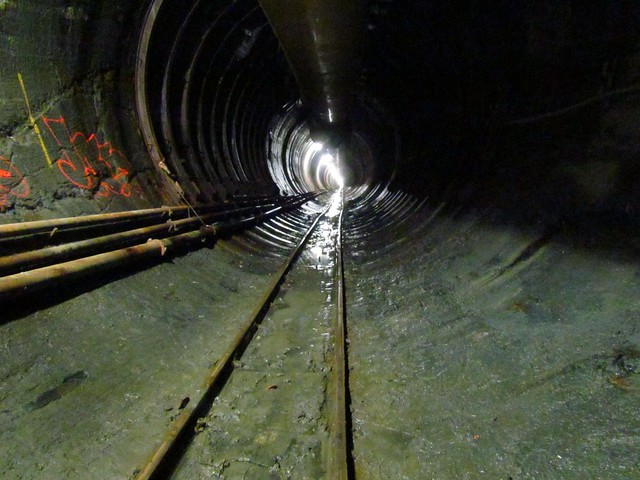I found myself this afternoon waiting for an uptown 6 train at Bleecker St. The blue construction door, hiding the southern extension of the uptown platform, was locked, but I could see through a hole in the fence. Using my cell phone camera, I snuck a photo in before the 6 train arrived.
The Broadway/Lafayette-Bleecker St. rehab is an extensive one. The station will soon be ADA-compliant, and the uptown 6 platform will be connected to the rest of the complex via a mezzanine that runs under the IRT tracks. Currently, straphangers can transfer from the 6th Ave. B/D/F/M trains only to the downtown 6. To accomplish this new crossover, the uptown platform is being extended a few hundred feet south, and that’s what you see above.
Work at the station has moved relatively slowly. We glimpsed the first renderings in late May of 2007 and saw some cross-section diagrams in mid-2009. Last year, Transit went behind the blue fence and sent out some official updates. The $94 million project is still set to wrap by November of this year.




 Regular readers of Second Ave. Sagas know all about the MTA’s budget problems. As the authority has slashed subway lines and bus routes, raised fares, trimmed internal spending by hundreds of millions of dollars and fought to keep costs down, its money is drying up. Its capital plans can no longer be bonded out, and its operations budget is under attack in the form of assaults on the payroll tax. It’s only going to get worse.
Regular readers of Second Ave. Sagas know all about the MTA’s budget problems. As the authority has slashed subway lines and bus routes, raised fares, trimmed internal spending by hundreds of millions of dollars and fought to keep costs down, its money is drying up. Its capital plans can no longer be bonded out, and its operations budget is under attack in the form of assaults on the payroll tax. It’s only going to get worse.

